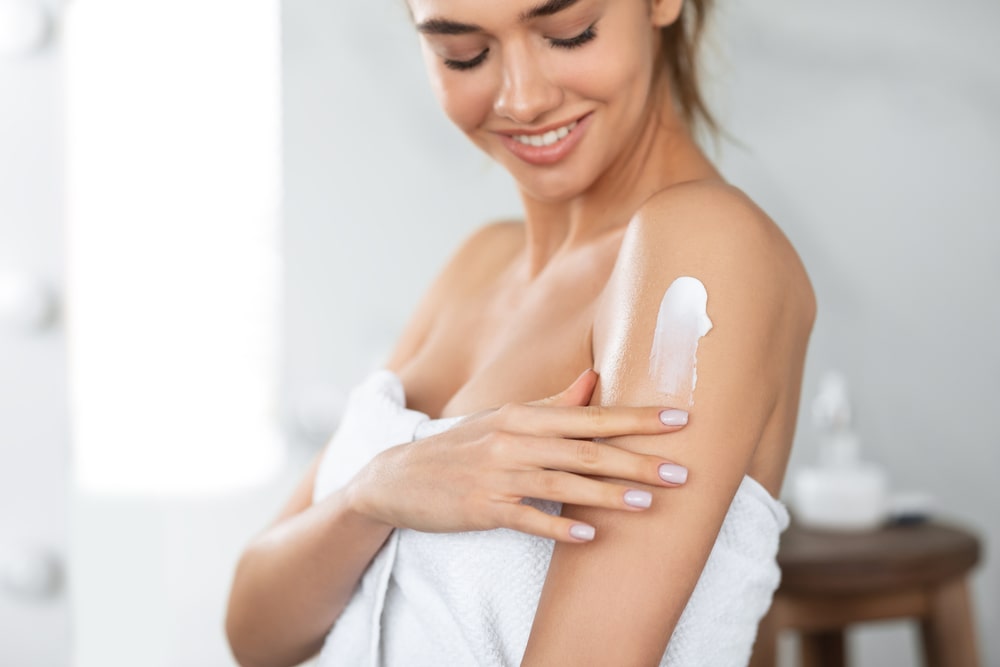Aim: To prepare, evaluate and submit herbal moisturizer.
Requirements: The plant materials like dried barks of G. glabra, fruits of E officinale, fruits of C. sativus, seeds of T. foenum graecum, oil of T. sativum, oil of C. nucifera, oil of P. Amygdalus, oil of Q. olivae and S. alba and honey, Laboratory mill, Sieve number #20, Soxhlet apparatus, Blender and Mortar pestle.
Chemicals:
Ethanol Water, Acacia, Beeswax, Cocos Nucifera Oil, Glycerin, Soy lecithin, Santolum alba oil, Prunus amygdalus Oil, Honey, Oleum olive oil Triticum sativum oil, Glycerrizha glabra, Emblica officinale, Cucumis sativus, Trigonella foenum graecum, Triticum sativum, Cocos nucifera, Prunus amygdalus, Oleum olivae, Santalum alba, Azadirachta indica, and Aloe barbadensis.
Formulation Consideration:
Herbal ingredients are not only efficacious to treat skin dryness as compared to synthetic ones but also capable to substitute synthetic bases to some extent. Numbers of moisturizers are available under the label of natural, safe, organic, and herbal, while the basic properties of humectants, occlusivity, and emolliency are consistent across all moisturizers. Most of the available moisturizers use synthetic adhesives, emulsifiers, perfuming agents, pigments, surfactants, and thickeners to form the base. There is an extensive need to replace toxic synthetic agents from the base using natural agents. The selected herbs in the present experiment have been utilized medicinally in crude aqueous and ethanolic extracts used to formulate the most complete herbal moisturizer with the bare use of synthetic ingredients.
Storage: Keep in a cool and dry place.
Formula:
| Sr.No. | Ingredients | Quantity Given (w/w %) | Quantity Taken |
| 1 | Acacia | 3.0 | |
| 2 | Beeswax (melted) | 2.0 | |
| 3 | Cocos Nucifera oil | 4.55 | |
| 4 | Glycerin | 3.5 | |
| 5 | Soy lecithin | 5.0 | |
| 6 | Santalum alba oil | 2.0 | |
| 7 | Prunus amygdalus oil | 3.0 | |
| 8 | Honey | 2.0 | |
| 9 | Oleum olivoe oil | 1.0 | |
| 10 | Triticum sativum oil | 0.6 | |
| 11 | Cucumis sativus Juice | 0.70 | |
| 12 | Glycyrrhiza glabra Extract | 0..75 | |
| 13 | Emblica officinale Extract | 0.210 | |
| 14 | Azadirachta indica Extract | 0.75 | |
| 15 | Trigonella foenum graecum Extract | 0.583 |
Procedure:
1. Preparation of Herbal Extract: Clean the Plant materials and dry them under the shade. Grind the barks of G. glabra, E. officinale, and leaves of A. indica using a laboratory mill and pass their coarse powders [particle size ~0.25 mm] through a sieve number 20. Take exactly 250 grams of coarse powder of each herb and extract with a hydro-alcoholic mixture [1000 ml, 90: 10 v/v ethanol: water] at 60–70°C for 24 hours by a continual hot extraction method, until complete exhaustion of the drug using a soxhlet apparatus. Take 250 gm of Dried seeds of T. foenum graecum and extract with a hydro-alcoholic mixture [1000 ml, 90:10v/v ethanol: water] using a cold maceration process as per the Indian Pharmacopoeia process for 8 hours to make concentrated extracts. Evaporate the obtained extracts under reduced pressure [AU 5 psi] at 50 ± 5°C for 5–15 min and dry the concentrated extract. Weigh 300 gm, pieces of Fruits of C. sativus and blend them to Obtain juice. Keep the juice in the refrigerator. Collect fresh A. barbadensis transparent gel from its fresh leaves using a stainless steel knife.
2. Preparation of Natural Base: Prepare the internal phase using ingredients, and composition given in Table, and carry out emulsification in the mortar pastel. Initially, Mix grated and melted beeswax, natural oil of T. sativum, C. nucifera, P. Amygdalus, O. olivae, and S. alba and other ingredients acacia, soy lecithin, glycerin, using a homogenizer at 200 ± 25 rpm at 65°-75°C.
After the complete homogenous mixing, add a 50ml portion of triple distilled water [70 ± 2°C] at a rate of 45ml/min at increasing speed [250 ± 25 rpm]. When the temperature of the internal phase reaches up to 50°C, phase inversion takes place and the solutions become viscous; then add half of the total amount of aloe gel and cucumber juice. When the temperature reaches 40°C, add honey [2% w/w] to this mixture.
3. Formulation of Herbal Moisturizer: Add different concentrations of extracts, juice, and gel (as given in Table) to the natural base formula.
Label: For external use only.
Storage: Store in a cool dry place.
Packaging: In a narrow-mouth plastic bottle.
Use: For soothing, nourishing, Moisturizing, and Emollient effect
Directions: Squeeze a small quantity on the palm and gently apply it onto the face and neck in a circular motion till absorbed.
Evaluation Table:
| Sr. No. | Test | Observations |
| 1 | Appearance | |
| 2 | pH | |
| 3 | Viscosity | |
| 4 | Spreadability | |
| 5 | Microbial contamination | |
| 6 | Irritation test |
Make sure you also check our other amazing Article on : How to Make Herbal Hair Gel?
